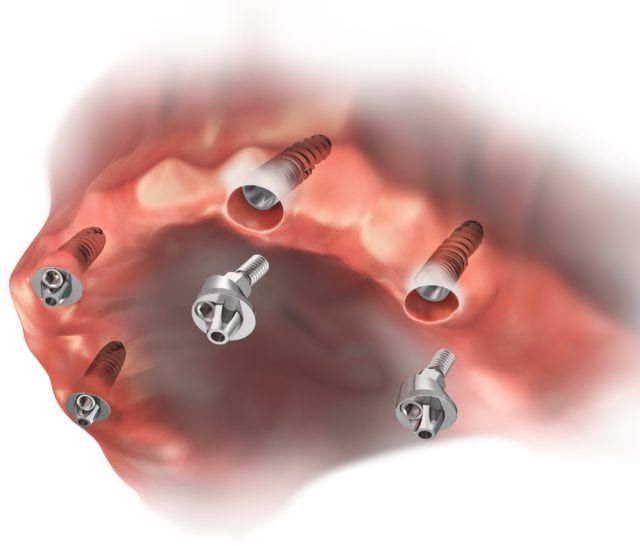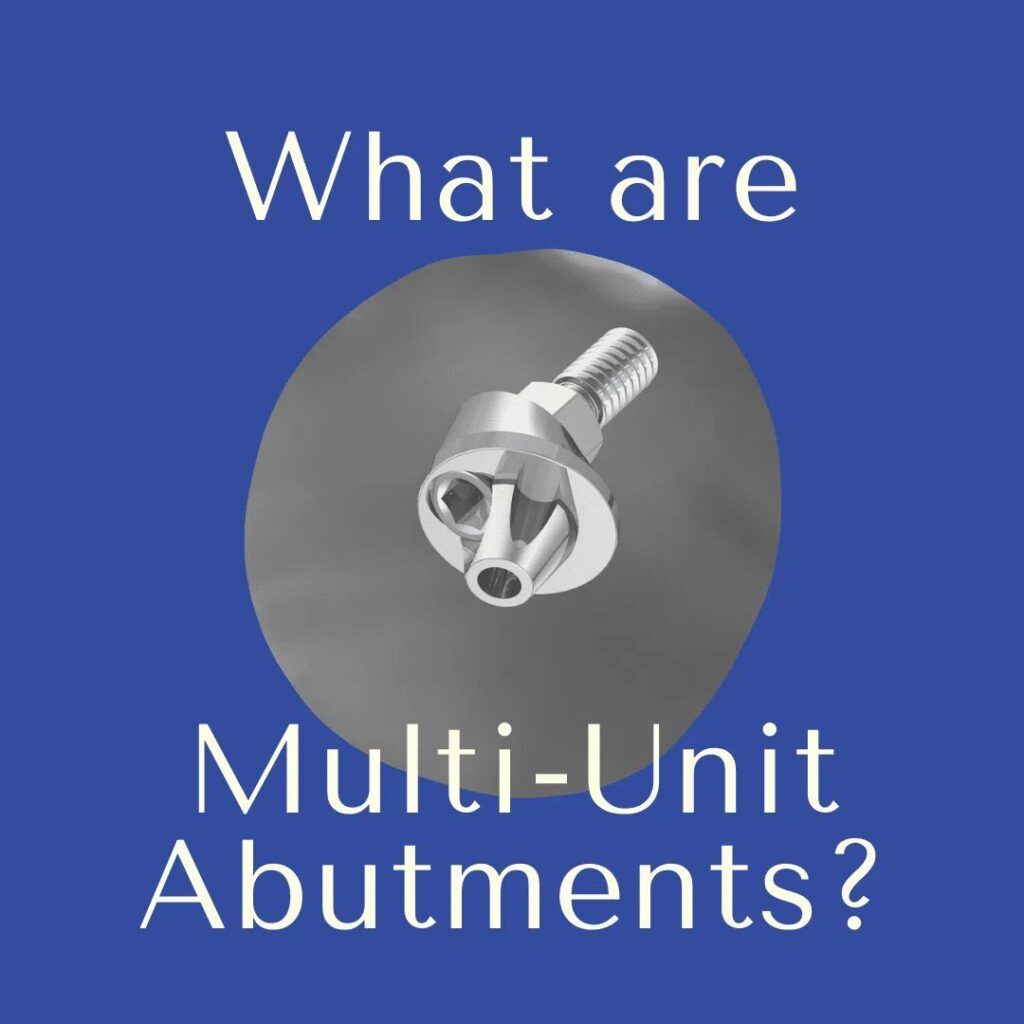An abutment is a small metal connector piece used to join a dental implant to a dental prosthetic. Abutments also make it possible to switch out a dental prosthetic without needing to remove the entire implant. Multi-unit abutments (MUA) are specialized abutments that are commonly used in coordination with zygomatic dental implants, as well as full arch replacements, which are also known as all-on-four dental implants.
MUA are available in a variety of sizes and angulations. Their size will be dependent on the type of dental implant being used. The most common angulations used for MUA are 0°, 17°, 30°, and 45°, however speciality sizes such as 52.5° and 60° are also available in some cases. The different angulations offered allow your implant dentist greater flexibility when placing all-on-four implants.

While MUA are not required for every all-on-four dental implant surgery, they may be recommended or even required in certain cases. One common reason why your implant dentist may recommend or require the placement of a MUA is due to the fact that they can be used in patients who have slight misalignments in their teeth. Placing different MUAs with different angles can ultimately help to level off the restoration.
Another common reason your dentist may opt for MUA is due to height disparities. In cases where there are height discrepancies, lower implants are to be placed higher above the tissue, while taller abutments must be placed deeper in the bones. This helps to make all the abutments the single, same height.
Not only does this give the final product a much more polished look, but it balances the restoration so that any force is evenly distributed. This maintains eating and speaking functions, as well as making sure the restoration lasts for a longer period of time.
MUA are placed after the implant site has healed and the permanent restoration is being placed. The first step is to remove the healing abutment, which is easy to do because the multi-unit attendant is easy to access. Next, the determined abutment will be placed into the implant before being checked for fit. Once the fit is confirmed, the abutment will be tightened in place.
The next thing to do is to take an oral impression or dental scan of the mouth in order to obtain the necessary prosthetic. In some cases, a traditional denture or bridge, can be converted into an implant-supported denture or bridge. However, in other cases, you may simply be getting your restoration from scratch.
Like anything else, there are advantages and disadvantages to using MUA. These should be discussed with your implant dentist prior to having implant surgery to ensure that you are making the best decision for your smile.
Multi-Unit Abutment Advantages:
- Allows dental implants to be placed in the jaw without the need for a sinus lift, which can save time and money
- The angulation of MUA can provide better support for the dental prosthetic
- Allows different implant systems to be used in coordination with one another
Multi-Unit Abutment Disadvantages:
- They are extremely tiny and only have a few threads, which can make them hard to tighten
- Can become loose and may need to be tightened again

